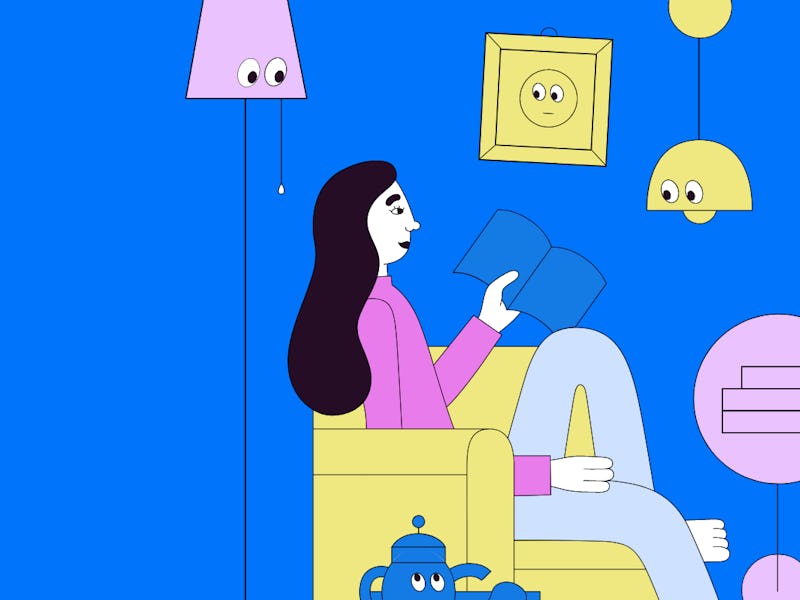In the Near Future, We'll Trade Our Privacy for Better Products
Our data is the key to personalized convenience, a new study suggests.

With artificial intelligence, social media, and smart devices rapidly integrating themselves into our lifestyles, a new study from the creative consulting firm Lippincott provides some insight into how technology will change our lives in the not-so-distant future.
The company analyzed a database of pioneering businesses that are already predicting the ways we’ll live our future lives like Etsy, Roam, and Lyft. It also surveyed thousands of “leading edge” American consumers.
“We found 80 percent of these consumers are excited about changes in technology, with 64 percent expecting the world will be better in 10 years than it is today,” Heather Stern, Chief Marketing and Talent Officer of Lippincott, tells Inverse.
Lippincott’s test demographic may be optimistic, but the company’s futuristic archetype might seem a little unsettling once you meet Dawn.
Dawn, the future consumer.
Dawn is Lippincott’s future consumer. She’s 25 and doesn’t report to just one employer, but works up to six jobs “applying her talents where they fit best.” (This lifestyle has its drawbacks.) She lives a highly automated lifestyle, full of consumer choices that have been customized to fit her specific likes and interests. She doesn’t even live in one place, instead paying a “portable lease” that allows her to live in multiple locations.
If all this non-committal freedom and adventure sounds idyllic, don’t hold your breath. Lippincott notes that Dawn’s promising life is also in a pretty serious state of uncertainty, and that she relies heavily on her “personal brand” to make ends meet.
“She has new needs as an ‘enterprise of one’ without the support of a traditional employer; she must assume the responsibilities of a corporation (sales, service, accounting), and she has mounting pressure to keep her ratings and digital reputation up so she can always get new gigs,” the study notes.
In fact, a look at how a current-day Dawn would operate — what Lippincott sees as a hint of what’s to come — seems incredibly stressful:
Sounds exhausting.
The consumer of the future is so interested in a far-reaching social experience that they will make consumer choices accordingly — like buying a self-driving car so that they can text while on their commute. But according to Lippincott’s vision, we’ll be so concerned with our virtual self-image that our personal decisions will be influenced exponentially.
“Dawn governs her life by what will curate her best self on her public platforms,” the study says. Dark.
Based on their analysis of leading-edge consumer choices, Lippincott also makes a case for the future consumer’s dwindling privacy in the face of convenience and a heightened interconnectivity.
“It’s also interesting to look at trade-offs consumers are willing to make,” Stern says. “Compared to the average U.S. consumer, this group is four times more willing to trade privacy for personalization and social connection.”
In the future, we will be living in a society of ratings. All products, services, and experiences will be crowd-verified through a virtual network of interconnectivity. We’ll also see our shared personalized data present us with customized options for all our consumption needs. According to Lippincott, that lack of privacy will be the trade off for better goods and services tailored specifically to the consumer.
“Dawn trades her privacy for convenience. But she has a heightened awareness of the value of the deal,” the study says. “She has learned her data is worth a lot, and shuts out brands who don’t keep their side of the bargain.”
Dawn is also apparently obsessed with living in a world that offers her immediate service and saves her time. She attends concerts virtually, so that she can do it on her own schedule, and she would rather 3D print a decent cabinet shelf than go shopping for the perfect one.
According to Lippincott, this is already happening: they cite projections that the 3D printing market will reach $21 billion by 2020, and a University of Massachusetts’ Amherst study that found that users began abandoning web pages after just two seconds. Our demand for immediacy is only bound to increase.
Quick, personalized convenience will increasingly inform what we buy and how we live, if Lippincott’s study is any indication. At what cost, consumers will have to decide for themselves.